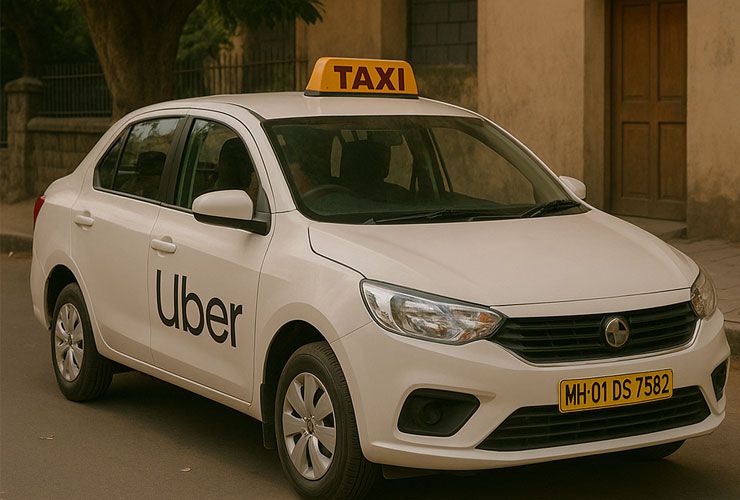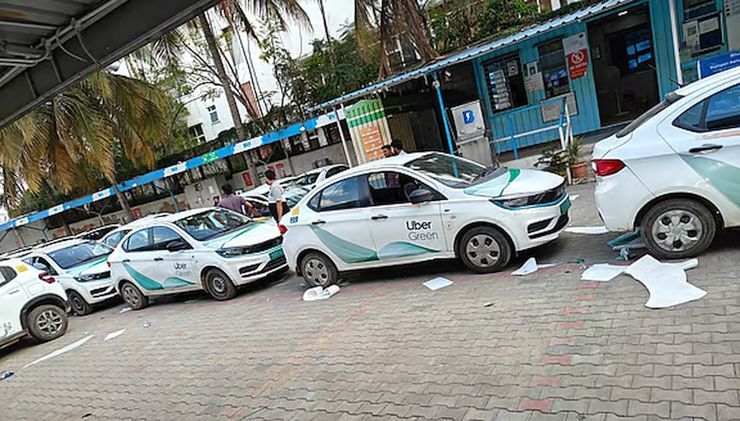Govt to Uber And Ola: Scrap All Cabs Older Than 8 Years


In a move aimed at improving road safety and curbing urban pollution, the Ministry of Road Transport and Highways has announced a new rule: vehicles operating under ride-hailing platforms like Ola and Uber will now be allowed to run only up to 8 years from the date of registration. After that, the vehicle must be retired from service, regardless of its mechanical condition.

This regulation will be applicable across the country and will affect thousands of commercial drivers currently running older cars under aggregator apps. Until now, the average age of vehicles used on such platforms varied from 6 to 12 years, depending on the city and operator policies. This new rule enforces a strict national standard, expected to kick in by the end of the year.
For the passengers, this change translates into safer, more comfortable, and cleaner rides. Older vehicles tend to lack basic safety features like airbags or ABS, and many are less fuel-efficient and more polluting. Riders have frequently raised complaints about poorly maintained cabs, especially in Tier 2 and Tier 3 cities. By ensuring fleet renewal every 8 years, the government hopes to push the platforms toward offering a better travel experience.

However, for cab drivers, the transition won’t be easy. Many drivers have financed their cars through loans with 5–7 year repayment periods. Having to replace a vehicle after just 8 years could put additional financial pressure on drivers already dealing with high fuel prices, increased competition, and platform commissions. If there’s no support system in place, it could lead to thousands of cars being taken off the road and drivers left without an immediate replacement.
Both Ola and Uber are now assessing their active fleet’s age profile. Early estimates suggest that nearly 20 percent of the vehicles currently on their platforms are more than 8 years old. These cars will soon be ineligible to operate under the new guidelines unless replaced or reassigned to private use.
Industry associations have asked for a grace period or incentives for vehicle replacement. Some are proposing schemes that include scrappage support, low-interest loans, or tax breaks for fleet operators who switch to newer or electric vehicles. This approach could also support the broader goal of cleaner urban transport, especially if old diesel cars are phased out in favour of petrol or electric alternatives.
Fleet management companies may step in to fill the gap. These companies offer rental and lease solutions to drivers who cannot afford to buy a new car outright. If they can offer flexible plans aligned with the new policy, they could play a key role in the transition. This could also reduce the burden on individual drivers, shifting fleet renewal responsibility to larger companies with deeper pockets.
Another interesting consequence could be a boost to the used car market. Vehicles removed from ride-hailing fleets at the 8-year mark may still be fit for private ownership. As long as their registration is valid and pollution checks are cleared, they could be resold to private users in smaller cities or rural areas.

There’s also a possibility of accelerated EV adoption. With many drivers forced to replace ageing petrol or diesel cars, electric models might become a practical choice, especially where state subsidies and zero road tax apply. Ola and Uber have already begun experimenting with electric fleets in select cities. This regulation may serve as the nudge needed to make those pilots mainstream.
For consumers, this regulation brings some assurance that their cab rides will be in newer, more reliable vehicles. For city authorities, it promises fewer old, smoke-belching taxis clogging the roads. But for drivers, especially those nearing the end of their loan cycles, this decision could feel like a sudden burden, unless there’s clear financial support to ease the switch.
Ultimately, the 8-year cap signals a tightening of standards across the transport sector. Whether it leads to a safer, cleaner future or unintended disruption will depend on how well the government and ride-hailing firms support the transition.